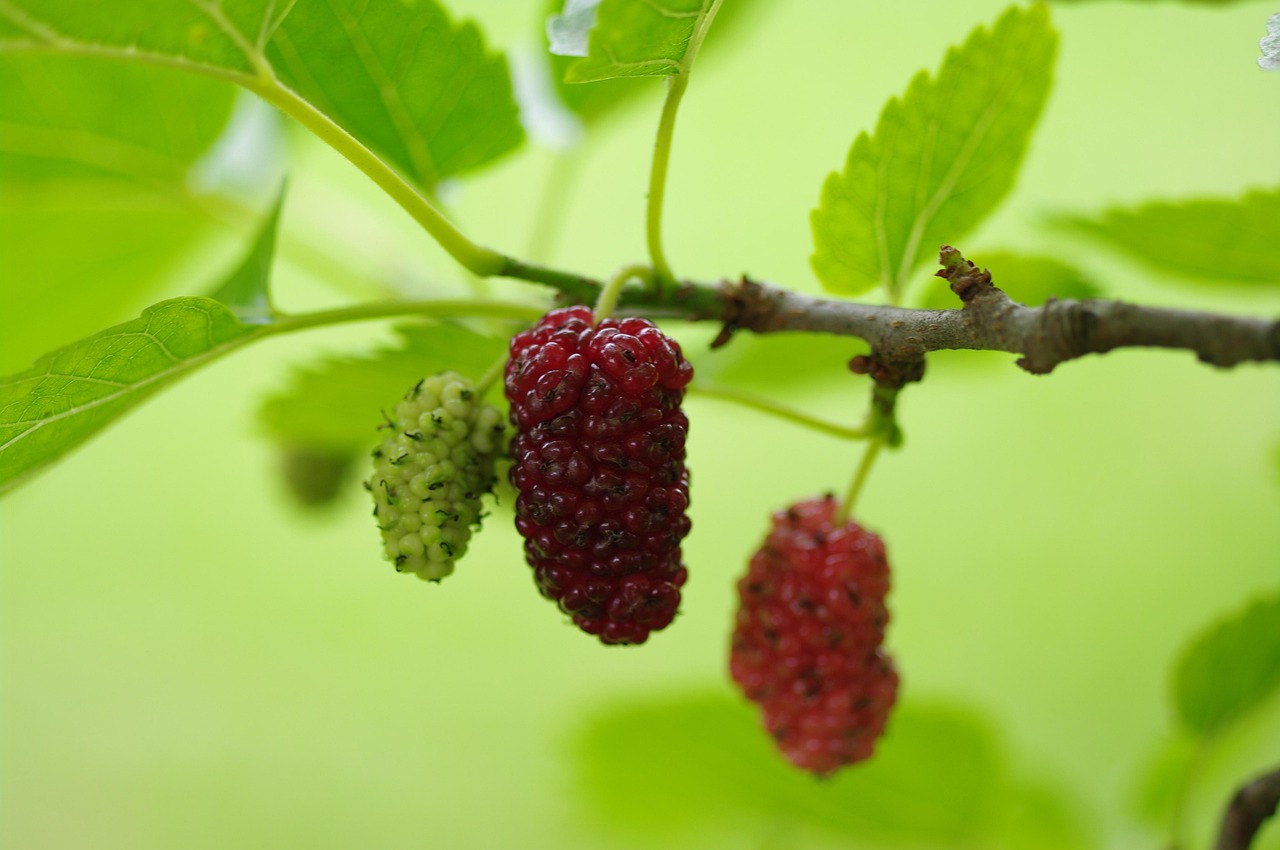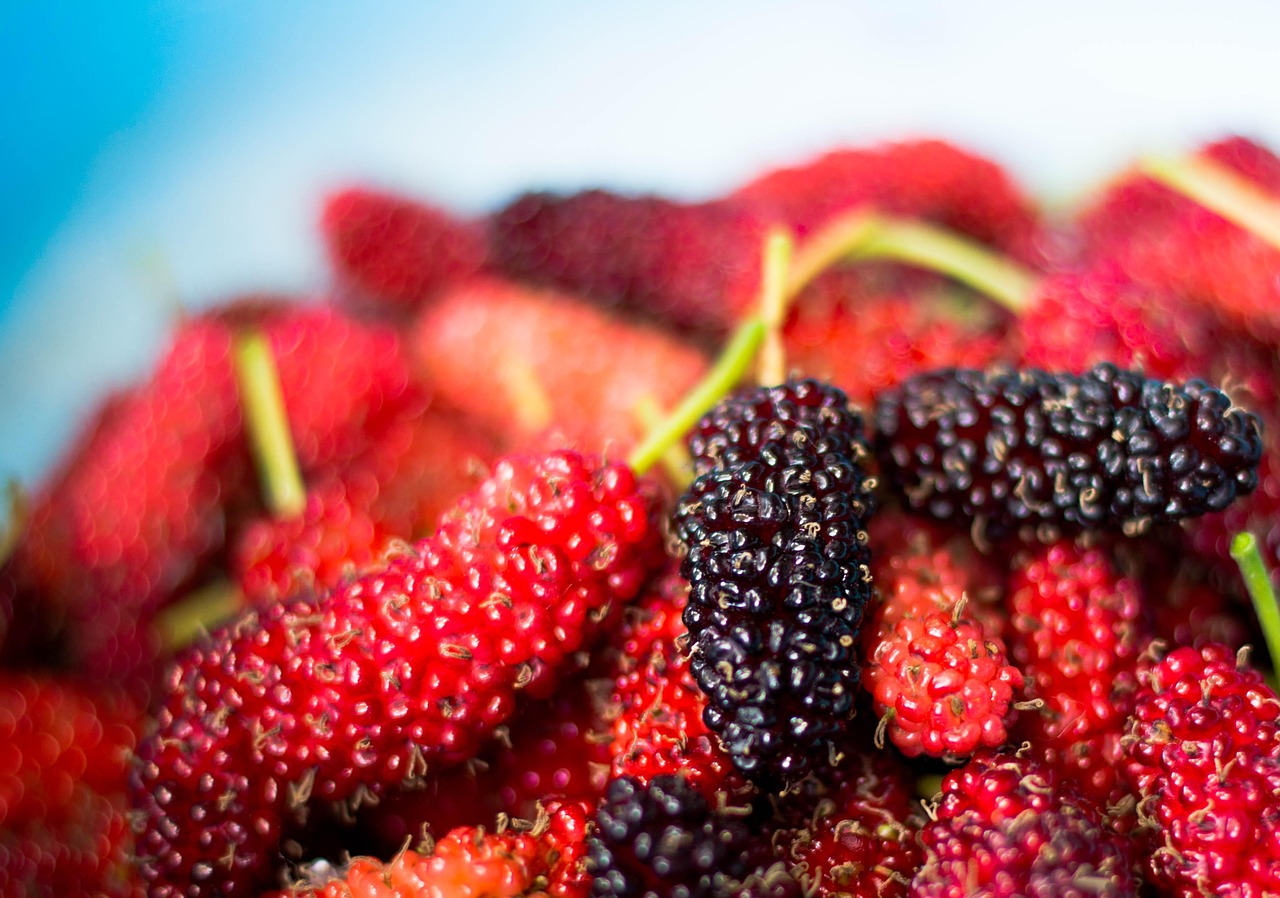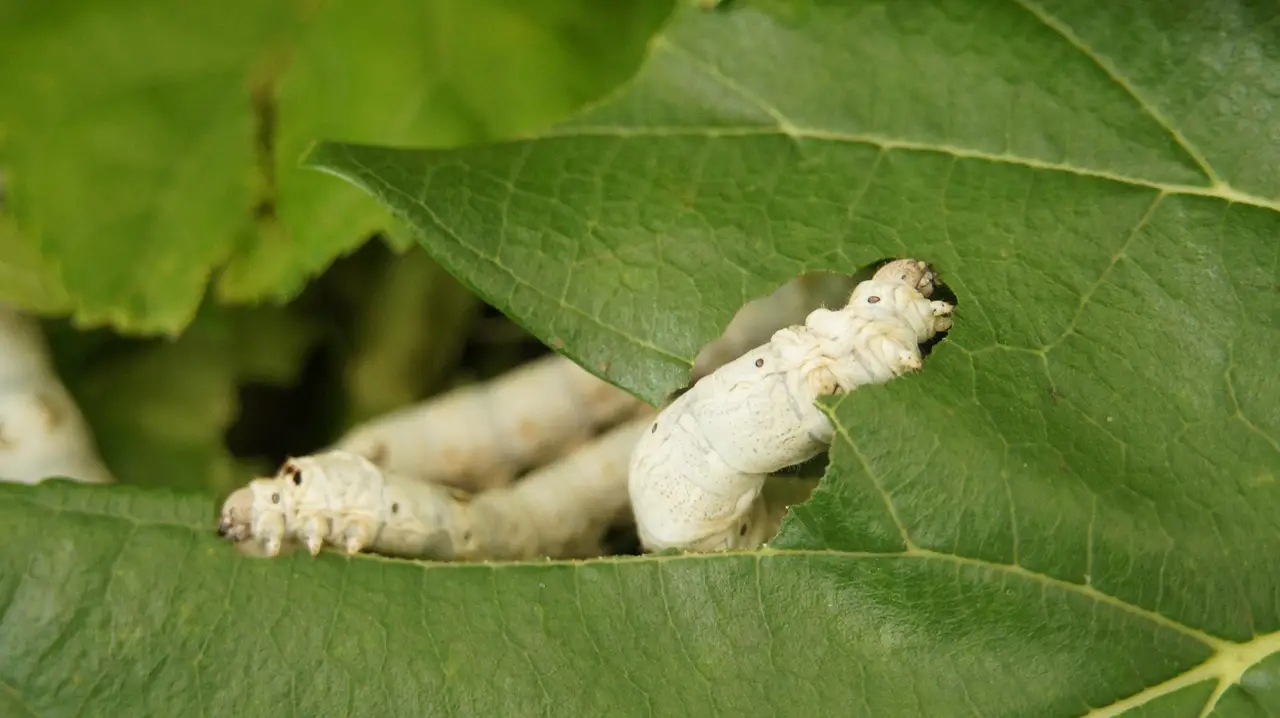Pruning mulberry trees is essential for effective garden design. It encourages healthy growth, improves fruit production, and maintains the tree’s shape. Proper techniques ensure that the tree fits well within your landscaping while enhancing its beauty.
Mulberry trees are known for their lush foliage and sweet, juicy fruits. They can be a stunning focal point in any garden, providing shade and attracting wildlife. However, without proper pruning, these trees can become overgrown and unruly. Understanding how to prune mulberry trees effectively is key to integrating them into your garden design.

Pruning not only helps maintain the tree’s size but also promotes better air circulation and sunlight penetration. This is especially important for fruit-bearing varieties as it leads to improved fruit quality. Regular pruning can also prevent disease and pest problems by removing dead or diseased branches.
Understanding Mulberry Trees
Mulberry trees belong to the Moraceae family, which includes several species. The most common ones are:
- White Mulberry (Morus alba)
- Red Mulberry (Morus rubra)
- Black Mulberry (Morus nigra)
These trees are deciduous and can grow quite large, with some species reaching heights of up to 70 feet. They thrive in various soil types but prefer well-drained soils. Additionally, mulberry trees are tolerant of drought conditions, making them a resilient choice for many gardeners.

Here are some key benefits of incorporating mulberry trees into your garden:
| Benefit | Description |
|---|---|
| Fruit Production | Produces sweet, edible fruits that attract birds and other wildlife. |
| Shade | Provides ample shade, creating a comfortable outdoor space. |
| Aesthetic Appeal | Adds beauty with its lush foliage and vibrant colors in different seasons. |
| Drought Tolerance | Adaptable to various conditions, including periods of drought. |
When to Prune Mulberry Trees
The timing of pruning significantly impacts the health and growth of mulberry trees. The best time to prune is during late winter or early spring when the tree is still dormant. This timing reduces stress on the tree and minimizes sap loss. Avoid pruning during the fall as it can encourage new growth that may not survive the winter.
In addition to seasonal timing, it is essential to consider the age of the tree. Young trees benefit from formative pruning to establish a strong structure. Mature trees require maintenance pruning to remove dead or crowded branches while preserving their natural shape.

Tools Required for Pruning
Using the right tools is crucial for effective pruning. Here are some essential tools you should have:
- Pruning Shears: Ideal for small branches.
- Loppers: Useful for medium-sized branches.
- Saw: Necessary for larger limbs.
- Gloves: Protect your hands from cuts and scrapes.
- Ladder: Helps reach higher branches safely.
Before starting your pruning, ensure that all tools are clean and sharp. This prevents damage to the tree and minimizes the risk of disease transfer between plants.
Pruning Techniques for Mulberry Trees
There are several key techniques to keep in mind when pruning mulberry trees:

- Crown Thinning: Remove select branches to improve light penetration and air circulation.
- Crown Raising: Trim lower branches to create clearance underneath the tree.
- Crown Reduction: Shorten branches to reduce the overall height of the tree while maintaining its shape.
- Deadwooding: Remove dead or diseased branches to promote new growth and prevent disease spread.
Each technique serves a specific purpose, contributing to the overall health and aesthetic of the tree. When performed correctly, these methods will help you maintain a beautiful and productive mulberry tree in your garden design.
Understanding these aspects of pruning mulberry trees will empower you to care for your trees effectively. As you become more familiar with these techniques, you’ll see how they enhance not just the health of your trees but also the beauty of your garden as a whole.
Common Mistakes to Avoid When Pruning Mulberry Trees
While pruning can greatly benefit mulberry trees, there are several common mistakes that gardeners should avoid. Understanding these pitfalls will help ensure that your pruning efforts are effective and promote healthy tree growth.
- Pruning at the Wrong Time: Pruning during the wrong season can lead to excessive sap loss or new growth that is vulnerable to frost. Always prune during late winter or early spring.
- Over-Pruning: Removing too many branches can stress the tree and reduce fruit production. Aim for a balanced approach.
- Neglecting Shape: Failing to maintain the natural shape of the tree can lead to an unappealing appearance. Regularly assess and adjust your pruning techniques.
- Using Dull Tools: Cutting with dull tools can damage branches and invite disease. Always sharpen your tools before pruning.
- Ignoring Tree Health: Pruning should not be done without assessing the overall health of the tree. Make sure to remove only unhealthy or unwanted branches.
Signs Your Mulberry Tree Needs Pruning
Recognizing when your mulberry tree needs pruning is crucial for maintaining its health and aesthetic appeal. Here are some signs to look for:
- Crowded Branches: If branches are too close together, they may hinder growth and light penetration.
- Dead or Diseased Limbs: Branches that appear lifeless or show signs of disease should be removed promptly.
- Pest Infestation: If you notice signs of pests, pruning affected areas can help prevent further spread.
- Excessive Growth: When a tree grows too large for its space, it is time for a trim to keep it manageable.
Techniques for Fruit Production Enhancement
Besides maintaining overall health, specific pruning techniques can significantly enhance fruit production in mulberry trees. Here are some effective methods:
- Selective Thinning: Remove some smaller branches within the tree’s canopy to allow more sunlight to reach the remaining branches, which can lead to larger fruits.
- Pinching: Pinch back new growth in early summer to direct energy toward fruit production rather than excessive foliage growth.
- Balancing Older and Younger Wood: Prune older wood while allowing younger wood to thrive, as this combination often yields better fruit production.
Step-by-Step Guide to Pruning Mulberry Trees
A systematic approach will ensure that you prune your mulberry tree effectively. Follow these steps for successful pruning:
- Gather Your Tools: Assemble all necessary tools before starting. This includes pruning shears, loppers, a saw, gloves, and a ladder.
- Inspect the Tree: Assess the overall health of the tree. Look for dead branches, disease signs, or overcrowded areas.
- Make a Plan: Decide which branches to remove based on your goals (e.g., improving shape, enhancing fruit production).
- Start with Deadwood: Remove any dead or diseased branches first to prevent further issues.
- Thin Crowns: Gradually thin out crowded areas by removing select branches without completely cutting into the tree.
- Crown Raise if Necessary: If clearance is an issue, trim lower branches carefully.
- Review Your Work: Step back periodically to assess your progress and ensure you are maintaining a balanced structure.
The Role of Mulberry Trees in Garden Ecosystems
Mulberry trees are not just beautiful; they play a significant role in supporting garden ecosystems. Here are some benefits they provide:
- Biodiversity Support: Mulberry trees attract various wildlife, including birds, insects, and beneficial pollinators.
- Nutrient Cycling: Their fallen leaves decompose and enrich the soil, improving nutrient availability for other plants.
- Pest Control: Attracting certain beneficial insects can help manage pest populations naturally.
Incorporating mulberry trees into your garden design not only enhances beauty but also contributes positively to the environment. Understanding how to care for them through proper pruning techniques will ensure they thrive and support surrounding flora and fauna.
The relationship between mulberry trees and their ecosystem highlights the importance of thoughtful gardening practices. As you continue to learn about pruning and caring for these trees, consider how they fit into a broader ecosystem in your landscape.
Mulberry Tree Varieties and Their Pruning Needs
Understanding the different varieties of mulberry trees is essential for effective pruning. Each type has unique characteristics, growth patterns, and specific pruning requirements. Here are the most common mulberry tree varieties and their respective needs:
| Variety | Characteristics | Pruning Requirements |
|---|---|---|
| White Mulberry (Morus alba) | Tolerates various soil types; produces sweet fruit; often used in silk production. | Requires regular thinning to maintain shape; best pruned in late winter. |
| Red Mulberry (Morus rubra) | Native to North America; produces dark purple fruit; prefers moist soils. | Prune to remove deadwood and improve air circulation; best pruned after fruiting. |
| Black Mulberry (Morus nigra) | Originates from Asia; produces large, sweet fruits; prefers well-drained soils. | Requires careful shaping due to its size; prune in early spring before new growth. |
Seasonal Care and Maintenance
In addition to pruning, seasonal care is vital for the overall health of mulberry trees. Each season presents unique challenges and opportunities for care:
Spring
In spring, as the tree emerges from dormancy, it’s important to:
- Inspect for any winter damage.
- Apply a balanced fertilizer to support new growth.
- Begin pruning if it wasn’t completed in late winter.
- Monitor for pests and diseases as the weather warms.
Summer
During summer, focus on maintaining tree health through:
- Regular watering, especially during dry spells.
- Controlling weeds around the base of the tree.
- Observing fruit development and adjusting pruning techniques if necessary.
Fall
In fall, preparation for winter is key:
- Remove fallen leaves and any debris to reduce disease risk.
- Finish any last-minute pruning before winter sets in.
- Consider mulching around the base to protect roots from frost.
Winter
Winter is a time for dormancy and reflection on care practices:
- Ensure that tools are clean and stored properly.
- Review the previous year’s pruning effectiveness and plan adjustments for the next season.
- If severe weather is expected, consider wrapping young trees to prevent damage from snow or ice.
Pest and Disease Management
Mulberry trees can be susceptible to various pests and diseases. Understanding how to identify and manage these threats is crucial for maintaining healthy trees. Here are some common issues:
Pests
- Spider Mites: These tiny pests can cause leaf discoloration. Regularly check leaves and use insecticidal soap if needed.
- Scale Insects: Scale can weaken trees by sucking sap. Manual removal or horticultural oil can help control infestations.
- Aphids: These pests can cluster on new growth. Encourage natural predators or use neem oil as a treatment.
Diseases
- Crown Gall: A bacterial disease that causes galls on roots and stems. Remove affected areas and ensure good drainage.
- Powdery Mildew: This fungal disease appears as white powder on leaves. Improve air circulation through proper pruning and apply fungicides if necessary.
The Aesthetic Value of Pruning Mulberry Trees
Beyond health benefits, pruning also enhances the aesthetic appeal of mulberry trees within garden design. Thoughtful pruning can create visually striking shapes and forms. Here are some design considerations:
- Sculptural Shapes: By selectively pruning branches, you can create unique shapes that serve as focal points in your garden.
- Layering Foliage: Pruning allows for layering of foliage, which adds depth and texture to garden beds.
- Seasonal Interest: Maintaining a balanced canopy ensures that the tree looks good year-round, providing visual interest even in winter.
The approach you take in pruning your mulberry trees can significantly influence their role in your garden design. By understanding each aspect of care, from pest management to seasonal maintenance, you can create a thriving environment that showcases the beauty and benefits of these remarkable trees.
Integrating Mulberry Trees into Your Overall Garden Design
When incorporating mulberry trees into your garden design, consider their interaction with other plants and the overall landscape. Mulberry trees can complement various garden styles, from formal to naturalistic. Here are some tips for effective integration:
- Companion Planting: Pair mulberry trees with companion plants that thrive in similar conditions. For example, herbs like rosemary or thyme can enhance soil quality while benefiting from the shade of the tree.
- Layering Plants: Use the vertical space provided by mulberry trees to layer different heights of plants. This can create a lush, multi-dimensional garden that draws the eye.
- Color Coordination: Choose plants with flowers or foliage that complement the rich greens of mulberry leaves. This creates a harmonious color palette that enhances visual appeal.
Additionally, consider the placement of your mulberry tree within the landscape. It should be positioned to maximize sunlight exposure while considering its mature size to avoid crowding with neighboring plants.
Creating Wildlife Habitats
Mulberry trees can be an excellent addition to wildlife-friendly gardens. Their fruits attract various birds, while their dense foliage provides shelter for smaller animals. Here are some ways to foster a wildlife-friendly environment:
- Diversity of Plants: Plant a variety of species around your mulberry tree. This diversity can attract more wildlife and create a balanced ecosystem.
- Nesting Areas: Leave some lower branches unpruned to provide nesting habitats for birds and small mammals.
- Water Sources: Incorporate bird baths or small water features nearby to support local wildlife.
By creating a welcoming habitat for wildlife, you enhance your garden’s ecosystem while enjoying the beauty and benefits of your mulberry trees.
The Economic Benefits of Pruning Mulberry Trees
Beyond aesthetic and ecological advantages, pruning mulberry trees can yield economic benefits as well. Here are some aspects to consider:
- Fruit Production: Healthy, well-pruned trees produce more fruit, which can be harvested and sold or used for personal consumption, potentially providing a source of income.
- Reduced Maintenance Costs: Regular pruning reduces the likelihood of significant damage or disease, leading to lower long-term maintenance costs.
- Aesthetic Value: A well-maintained tree increases property value and can enhance the overall appeal of your landscape.
Investing time in pruning and caring for your mulberry trees can pay off in multiple ways, from improving aesthetics to increasing potential yields.
Final Thoughts
Pruning mulberry trees is more than just a maintenance task; it is an essential part of creating a vibrant, healthy garden. Understanding the specific needs of different mulberry varieties allows you to tailor your approach effectively. Proper pruning techniques promote not only the health of the trees but also their aesthetic contributions to your landscape.
By integrating mulberry trees thoughtfully into your garden design, you enhance biodiversity and create habitats for wildlife. Additionally, paying attention to seasonal care and pest management ensures that your trees remain healthy and productive.
The economic benefits derived from well-pruned mulberry trees—such as increased fruit production and reduced maintenance costs—further emphasize their value in any landscape design. As you continue to learn about and practice pruning techniques, you will discover how rewarding it can be to cultivate these beautiful trees within your garden.
Ultimately, mulberry trees can play a pivotal role in enhancing your outdoor space, providing beauty, shade, and sustenance while offering numerous benefits for both you and the local ecosystem. Embrace the art of pruning as a way to appreciate the full potential of these remarkable trees in your garden design.
